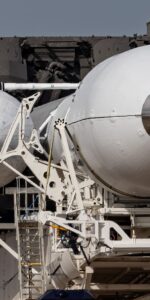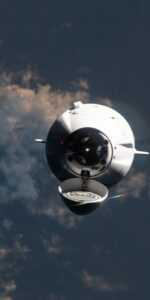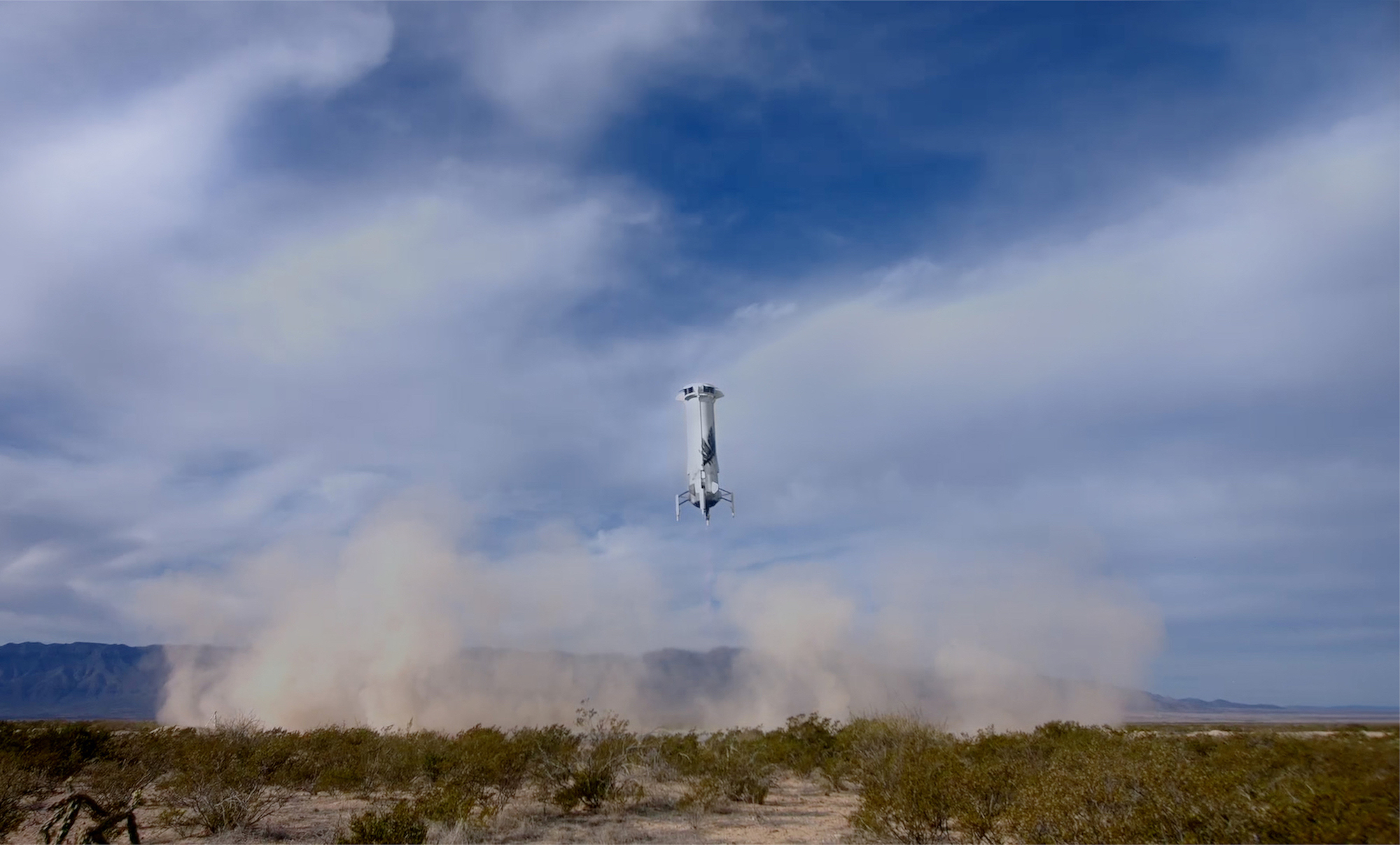
After a day-long delay due to cold weather and a ground system issue, Kent, Wash.-based Blue Origin successfully returned its New Shepard to flight after a 15-month hiatus on Tuesday, with a flawless uncrewed mission out of West Texas. Booster NS4 rose ponderously from Launch Site One at 10:42:28 a.m. CST, lifting Crew Capsule RSS H.G. Wells to the edge of space on the NS-24 mission with 33 payloads from NASA, academia, research institutions and commercial entities, as well as 38,000 postcards via Blue Origin’s non-profit Club for the Future foundation.
“A special thank you to all of our customers who flew important science today and the students who contributed postcards to advance our future of living and working in space for the benefit of Earth,” said Phil Joyce, senior vice president for New Shepard. “Demand for New Shepard flights continues to grow and we’re looking forward to increasing our flight cadence in 2024.”
Today’s launch came 15 months after NS-23—another uncrewed mission, laden with 36 research payloads and thousands of Club for the Future postcards—suffered an anomaly during its ascent phase on 12 September of last year, causing the on-board emergency detection system to autonomously trigger the separation of RSS H.G. Wells at altitude. The Crew Capsule parachuted to a safe, intact landing, but the NS3 booster impacted the ground and was lost.
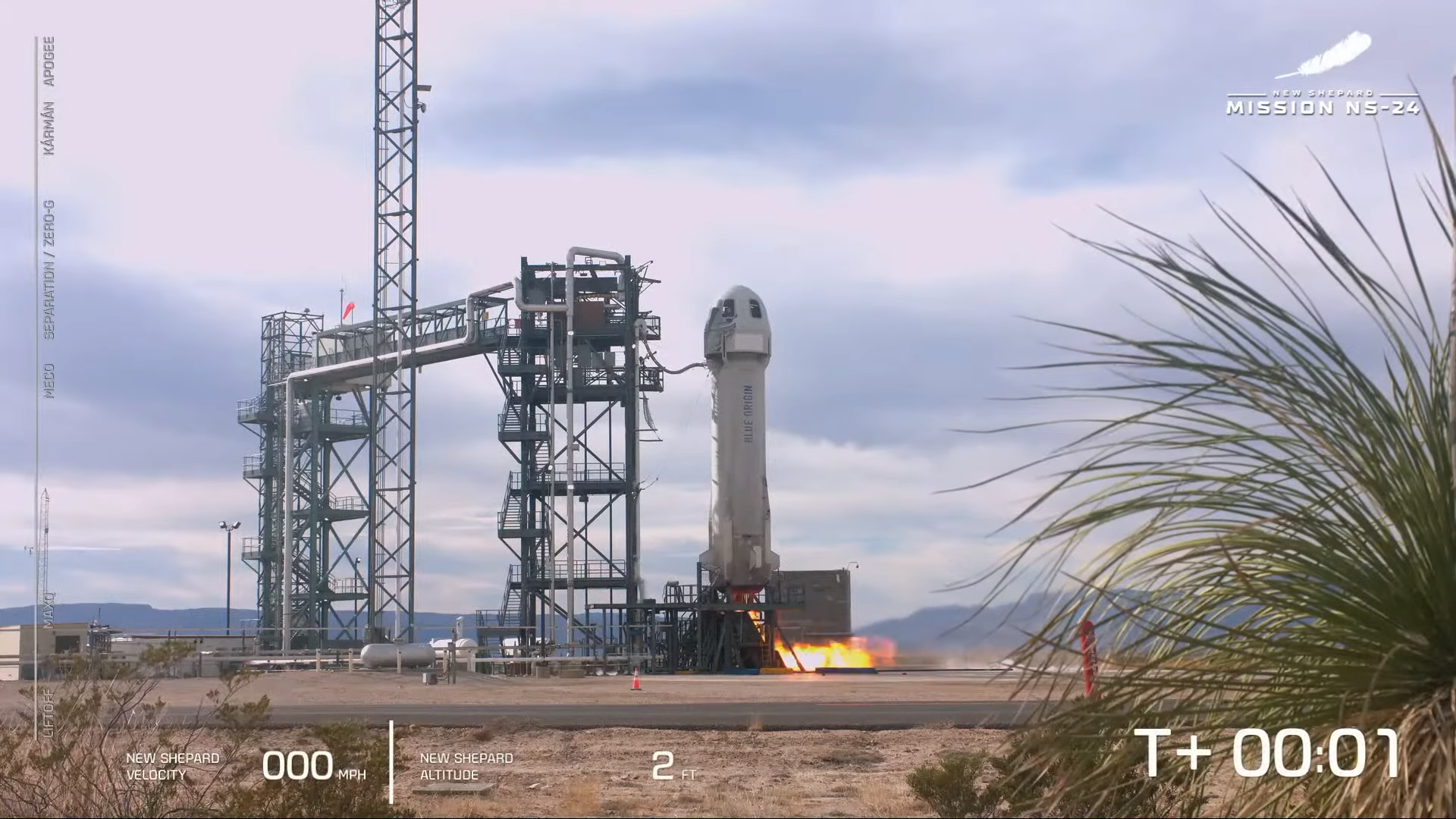
Last March, after a complex investigation, Blue Origin revealed that the mishap arose in response to “a thermo-structural failure” of NS3’s BE-3 engine nozzle. “The resulting thrust misalignment properly triggered the Crew Capsule escape system,” it was noted, “which functioned as designed throughout the flight.”
In response to the separation of the Crew Capsule, New Shepard’s propulsion system commanded the shutdown of the BE-3 engine, which followed “an unpowered trajectory to impact within the defined flight safety analysis prediction, resulting in no danger to human life or property”.
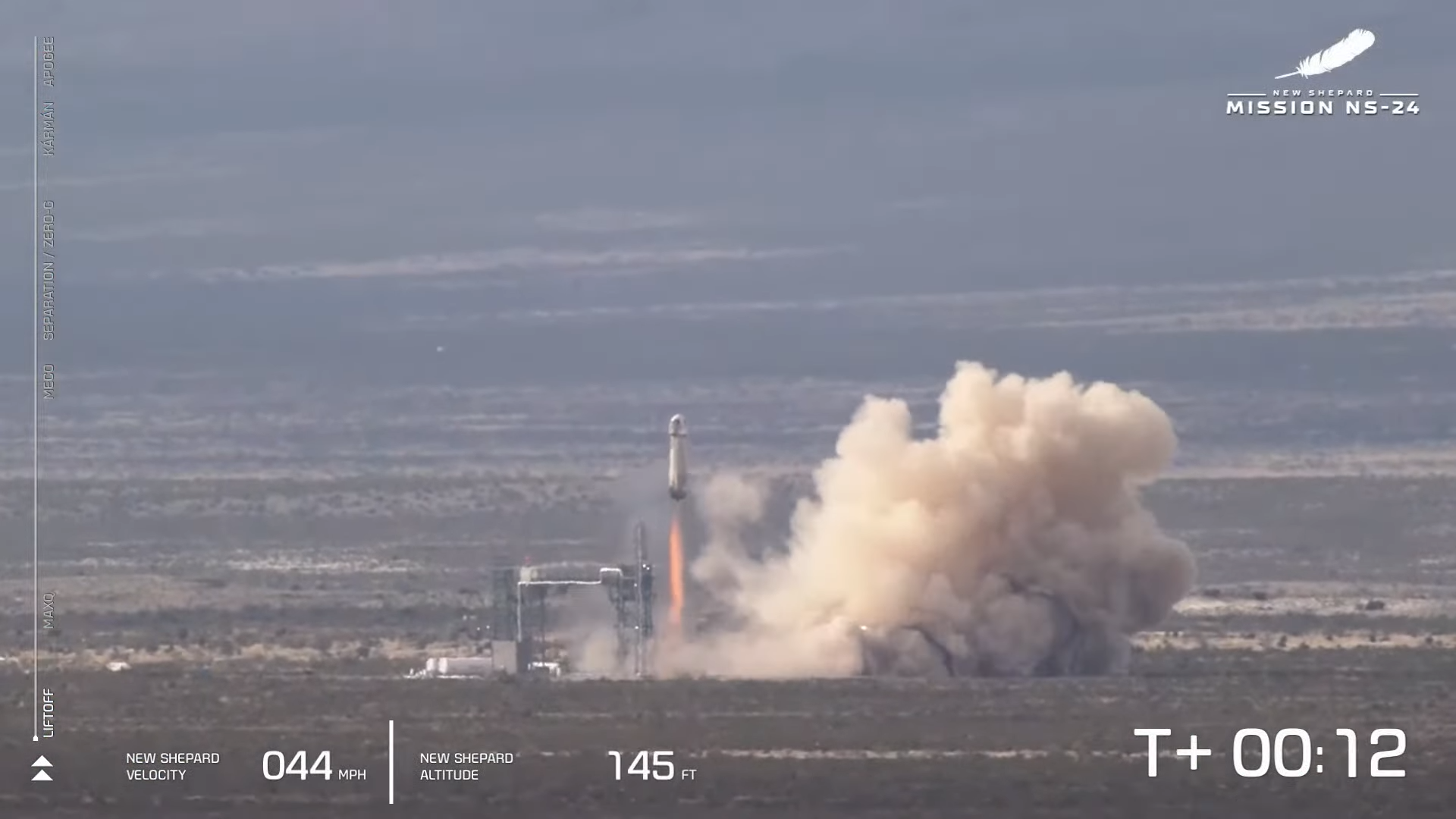
The cause was traced to structural fatigue failure of the engine nozzle, caused by operational temperatures “that exceeded the expected and analyzed values of the nozzle material”. Post-anomaly tests revealed that the flight configuration of the nozzle on the NS-23 mission operated at higher temperatures than earlier design configurations, with forensic examination of recovered fragments revealing “clear evidence of thermal damage and hot streaks resulting from increased operating temperatures”.
Last year’s anomaly led to a raft of design changes, notably to the BE-3 engine’s combustion chamber and operating parameters to reduce nozzle bulk and hot-streak temperatures. Additional design changes to the nozzle itself served to improve structural performance under extreme thermal and dynamic loads.
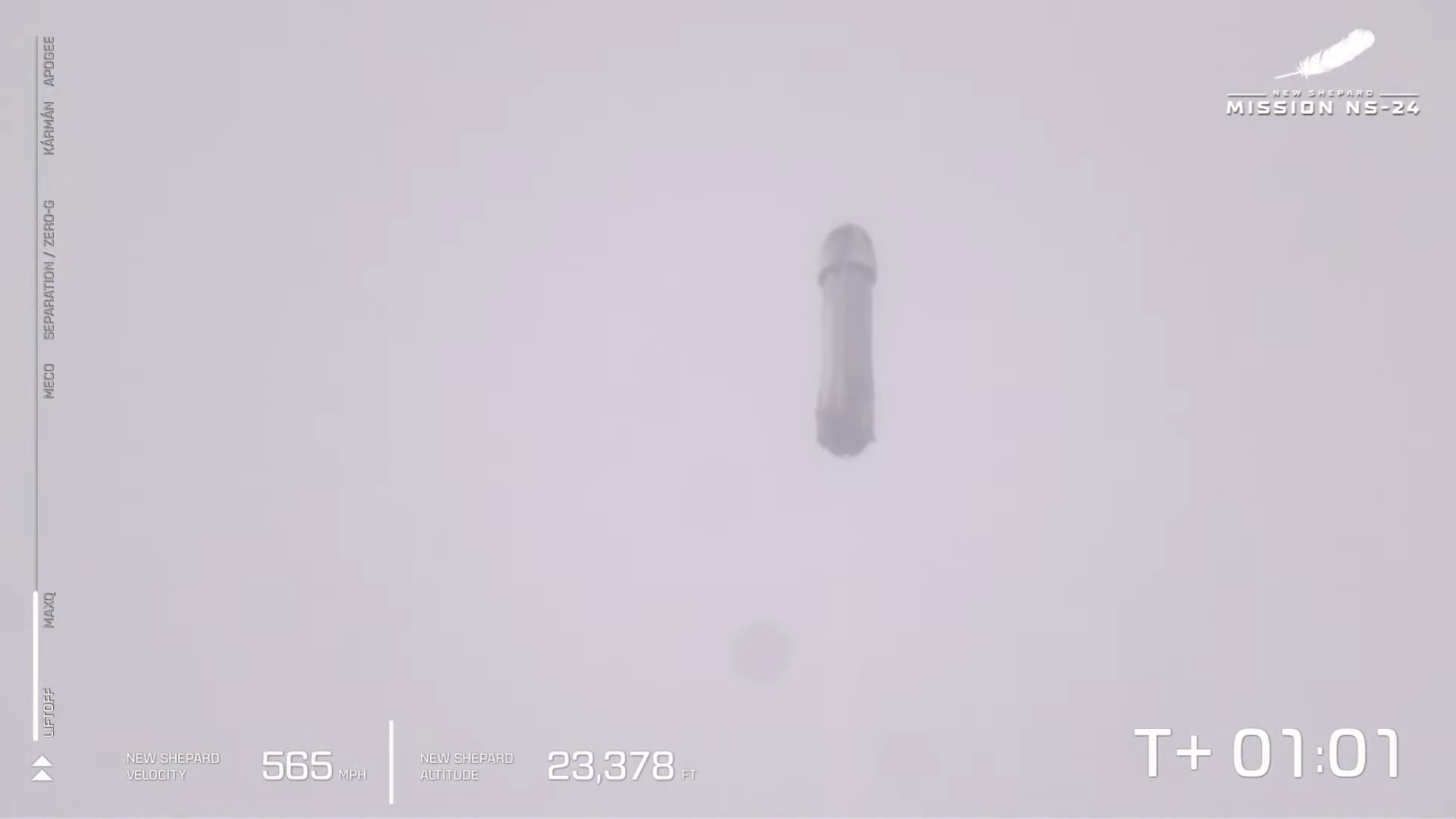
Although Blue Origin noted in March that it intended to return New Shepard to flight “soon”, with a reflight of NS-23’s payload suite, it was not until last week that the definitive NS-24 launch date was revealed. Initially targeted for 8:30 a.m. CST on Monday, cold temperatures at Launch Site One pushed this T-0 point back by one hour, before a ground system issue that required troubleshooting forced a scrub and 24-hour turnaround for a Tuesday launch attempt opening at 10:37 a.m. CST.
Liftoff eventually took place five minutes into this morning’s window. “Guidance Internal,” came the call at T-16 seconds, followed by “Command Engine Start” as New Shepard’s powerful BE-3 engine roared alive with a combined thrust of 110,000 pounds (50,000 kilograms). The booster sprang from Launch Site One and climbed rapidly into crystalline West Texas skies, smoothly passing the period of peak aerodynamic turbulence (“Max Q”) a minute into the flight.
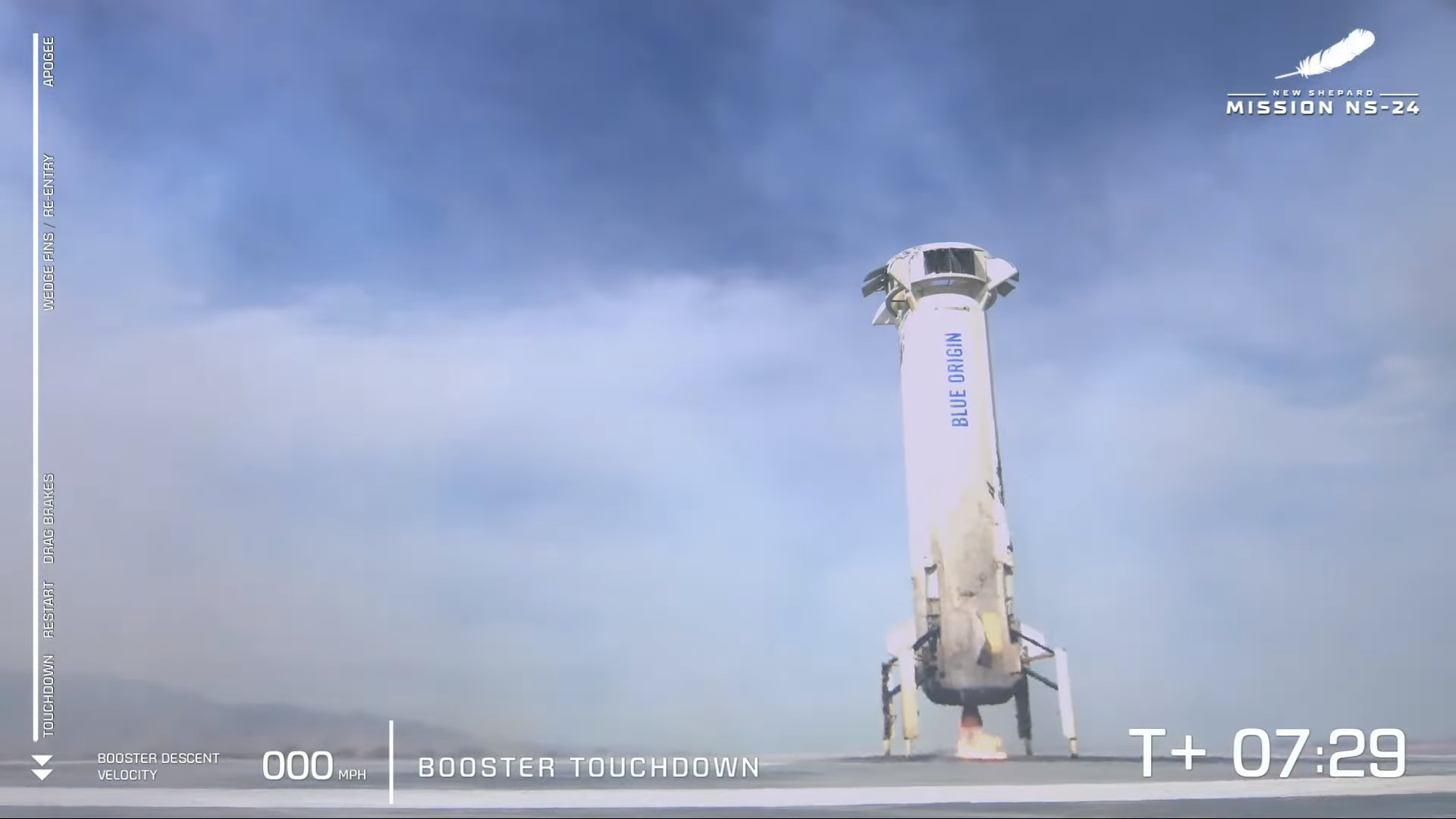
This time, the BE-3 shut down as intended at 2.5 minutes after launch and the NS4 booster—making its ninth flight and third uncrewed mission since January 2021—and Crew Capsule separated a few second later. According to Blue Origin’s published statistics, NS4 reached an apogee of 347,208 feet above ground level, equivalent to 65.75 miles (105.8 kilometers), and the Crew Capsule’s height peaked at 347,601 feet, equal to 65.83 miles (105.9 kilometers).
Descending beneath three beautiful red-and-blue main parachute canopies, the Crew Capsule landed safely at 10:52:41 a.m. CST, wrapping up a flight of just over ten minutes. So too did NS4, whose picture-perfect touchdown was heralded in fine fashion by a rip-roaring sonic boom that echoed across the desiccated West Texas landscape.
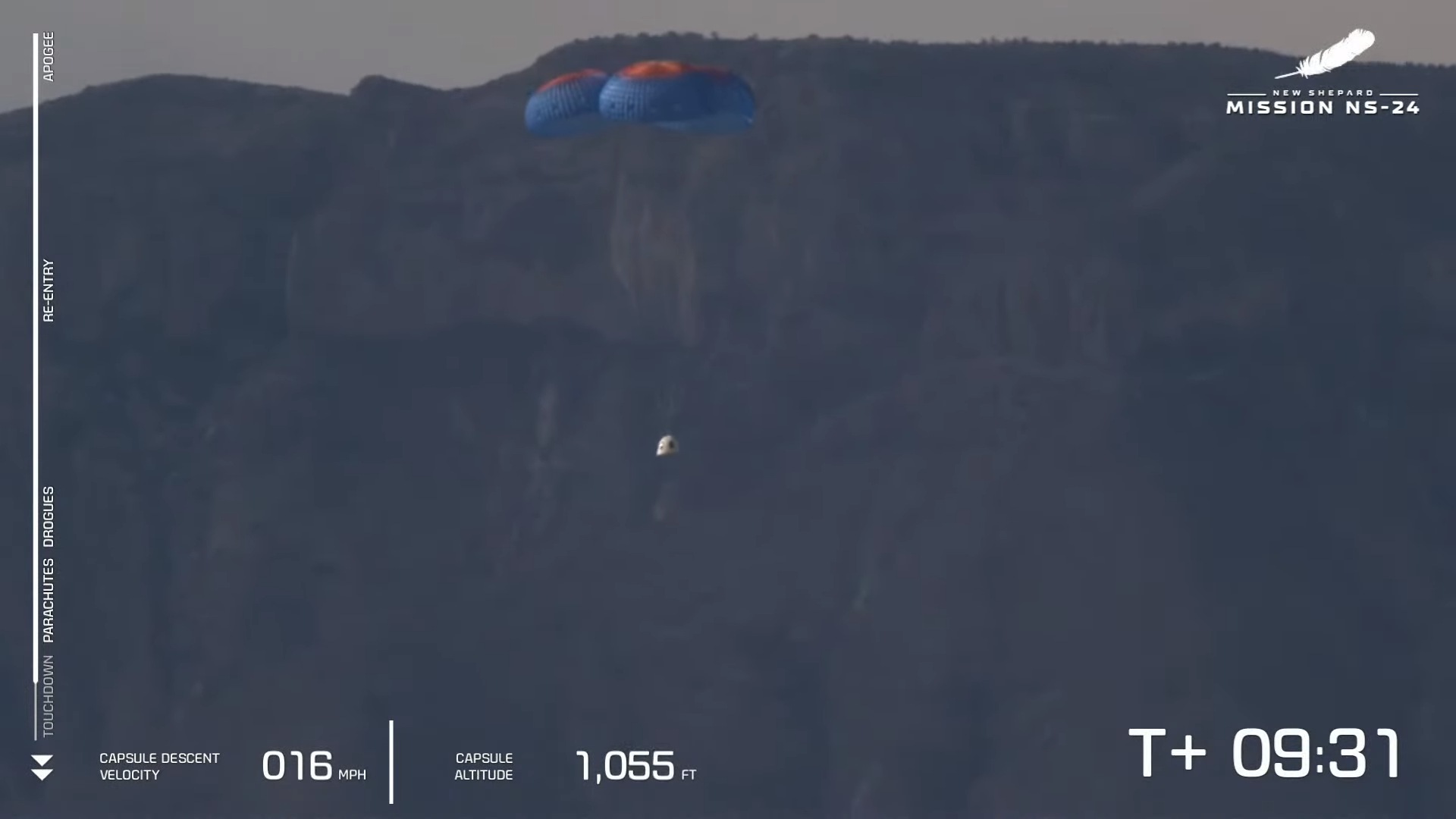
Under the U.S. definition, any vehicle exceeding 50 miles (80 kilometers)—roughly the transitional zone between the mesosphere and thermosphere—is classified as having passed the lowermost threshold for the “edge” of space. But the Fédération Aéronautique Internationale (FAI) notches this threshold a little higher at 62 miles (100 kilometers), at the so-called “Kármán Line”.
This is named for Theodore von Kármán, a Hungarian-American engineer who first described it as the altitude at which the atmosphere is too thin for aeronautical applications, since vehicles would need to travel faster than orbital velocity to achieve sufficient lift.




